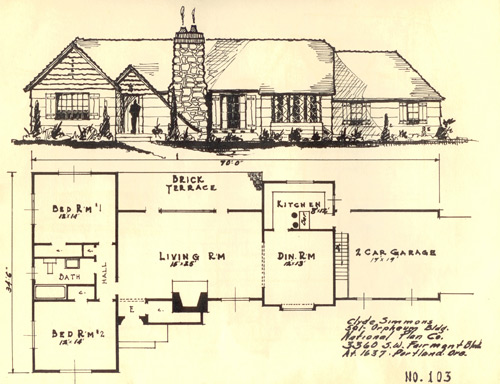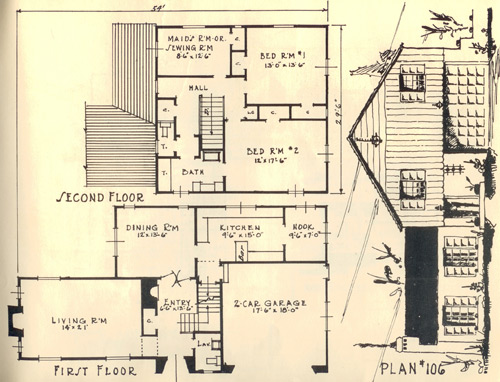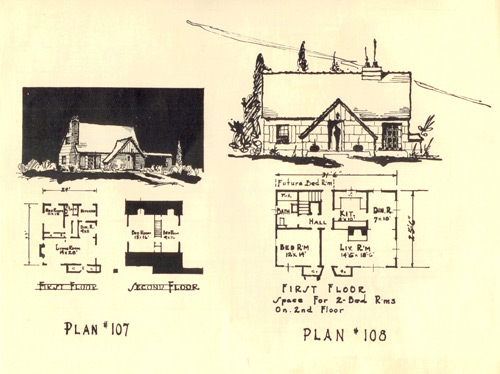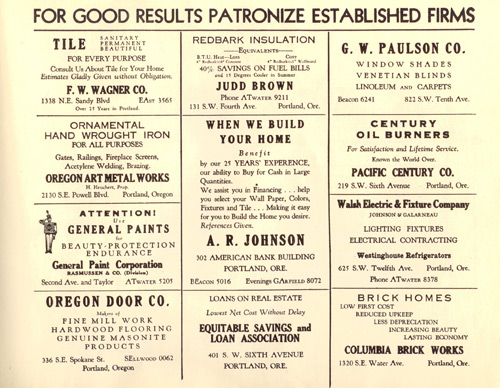
Looking through some old architecture material the other day we came across a booklet that we’ve been hanging onto for what seems like an eternity. It’s a house plan book that presents several pages of different home designs –complete with bad renderings and smokey chimneys. It was given to us by a grandparent who was, we assume, considering it as a housing option long ago. It’s from the 1940’s or 50’s or maybe even earlier -apparently they didn’t put dates on things then. Back in the day, you and your family would pick out a design you liked, put a check for ten bucks in the mail and in a few weeks a full set of architectural plans and specifications would show up. You took your pre-approved plans down to the city for a permit, hired a builder and you were off to the races.


While this method of selecting a house was innovative in the post-war era, it’s nothing revolutionary today. Similar magazines offering stock floor plans have been around ever since, and you can find them at local book stores and magazine shops, albeit most of the designs inside are steaming piles of dog poop.


Even though the concept isn’t revolutionary, the actual floor plans in this little book are. Flipping through the pages it becomes alarming clear how modest people’s expectations were 60 years ago. It’s common knowledge that houses in the current era have, on the whole, become ridiculously over-sized and seeing these stock plans from a couple of generations ago is shocking. The floor plans range from 800 square feet to 2,100 square feet with their average size being a humble 1,250 square feet. All but 2 out of the 11 designs have at least 2 bedrooms and the mac-daddy deluxe version includes a “maid’s room”.
maid noun ( SERVANT ) /meId/ n [C]: a woman who works as a servant in a hotel or in someone’s home
(don’t worry –we didn’t know what it was either)


How did things get so out of hand in just two generations? With the current economic situation it’s likely that we’re heading back in this direction. Reviewing some of these designs, it’s easy to see how the floor plans could be made even more efficient by shaving off an additional couple hundred square feet. The kitchens could open up to the living rooms and the dining rooms could share space with the living rooms. All the sudden a two bedroom house of 1,000 isn’t unreasonable.


These homes are actually quite sustainable for a variety of reasons. They have a small footprint (both physically and environmentally). They are compact, and if constructed with modern materials, would consume far less energy than most homes today. They’re not overly personalized and could accommodate several generations of families. They’re also easy to remodel and can be flexible over the years as needs change.


With the new economic constraints and the changing attitudes about housing, we’ll no doubt be looking to the future for answers. At the same time there is a modesty and a simplicity that we’ll need to take with us from the past. This humble little book is one of many examples that serves as a good lesson.


For more of our antics, follow us on Twitter.





